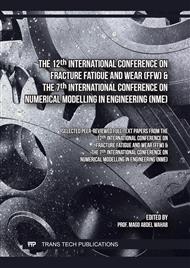p.3
p.19
p.33
p.43
p.55
p.65
p.75
p.89
p.103
The Microstructure and Diffusion Transformation of Precipitation-Hardened Sterling Silver for Jewelry Application
Abstract:
Sterling silver commonly uses copper as its primary alloying element, which enhances hardness. However, the presence of copper can cause a fire stain—a red spot microstructure—leading to tarnishing issues. This research focuses on reducing the copper content and developing suitable processes to enhance hardness through the use of three different alloy compositions within the AgCu and AgCuZnNi systems: Alloy SA (92.5 wt% Ag - 7.5 wt% Cu), Alloy A (93.5 wt% Ag - 5.01 wt% Cu - 0.79 wt% Zn - 0.70 wt% Ni), and Alloy B (94.5 wt% Ag - 4.24 wt% Cu - 0.63 wt% Zn - 0.63 wt% Ni). Precipitation hardening was measured at temperatures of 250 °C, 350 °C, and 450 °C for various durations ranging from 15 to 180 minutes. The results demonstrated an improvement in hardness, increasing from 60-70 HV to 120-160 HV after the heat treatment, with optimal results achieved for Alloy B at a temperature of 350 °C for one hour. This refined alloy composition presents a viable alternative, offering reduced copper content while maintaining enhanced mechanical strength and long-term durability post-heat treatment. Furthermore, the CIELAB test confirmed that Alloy B exhibits superior tarnish resistance. The composition and optimized process outlined in this research can serve as a guideline for producing sterling silver for commercial applications.
Info:
Periodical:
Pages:
55-62
Citation:
Online since:
January 2025
Price:
Сopyright:
© 2025 Trans Tech Publications Ltd. All Rights Reserved
Share:
Citation:


